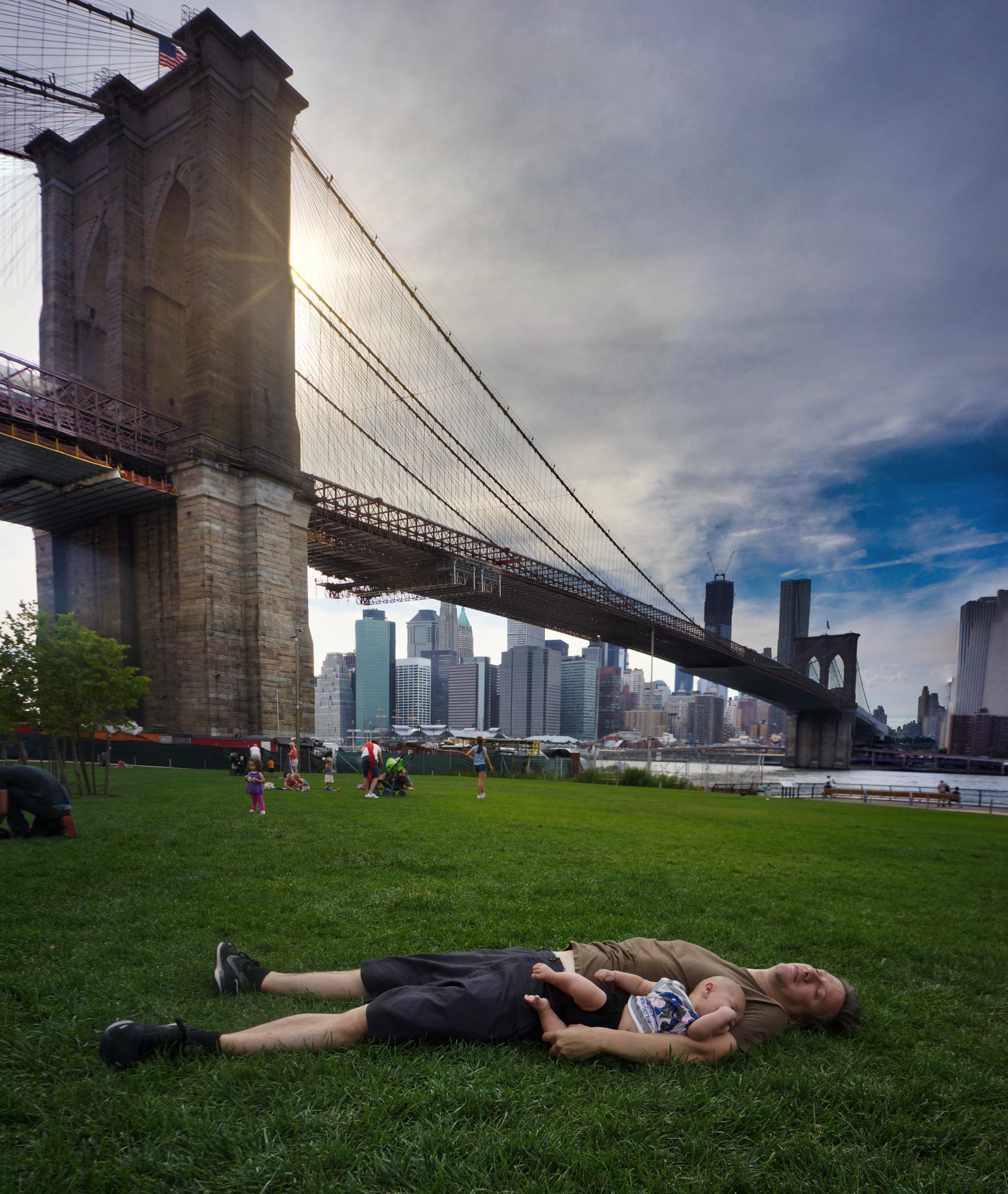Brooklyn Bridge
The Brooklyn Bridge is a hybrid cable-stayed/suspension bridge in New York City. It connects the boroughs of Manhattan and Brooklyn, spanning the East River. The Brooklyn Bridge has a main span of 1,595.5 feet (486.3 m) and a height of 276.5 ft (84.3 m) above mean high water. It is one of the oldest roadway bridges in the United States and was the world's first steel-wire suspension bridge, as well as the first fixed crossing across the East River.
“The Brooklyn Bridge started construction in 1869 and was completed fourteen years later in 1883. It was originally called the New York and Brooklyn Bridge and the East River Bridge, but it was later dubbed the Brooklyn Bridge”
Over the years, the Brooklyn Bridge has undergone several reconfigurations; it formerly carried horse-drawn vehicles and elevated railway lines, but now carries vehicular, pedestrian, and bicycle traffic. Commercial vehicles are banned from the bridge.
Since opening, the Brooklyn Bridge has become an icon of New York City, ranking among the city's most popular tourist attractions.
Although the Brooklyn Bridge is technically a suspension bridge, it uses a hybrid cable-stayed/suspension bridge design. The towers are built of limestone, granite, and Rosendale cement. The limestone was quarried at the Clark Quarry in Essex County, New York
History
Brooklyn Bridge was designed by John Augustus Roebling. While conducting some of the last measuring across the East River ferry crushed his foot against the piling. HIs foot had to be amputated but he got tetanus from it, fell into a coma and died from tetanus 3 weeks after the amputation and just few days after he placed his son Washington Roebling in charge of the building the bridge. Construction began on January 3, 1870. First step was building of solid foundations for the bridge. That was achieved by using “caissons”, closed wooden boxes that were placed under water and filled with compressed air that allowed workers to dig the riverbed. Problem with caissons is a danger of getting so-called “caisson disease” - a decompression sickness that appears in construction workers when they leave compressed atmosphere to fast and enter normal atmosphere. One of the first victims of caisson disease was Washington Roebling, which left him paralyzed and bedridden, so his wife, Emily Warren Roebling had to step in and spend next 11 years as his assistant and supervisor of the construction of the bridge.
On May 24, 1883, Brooklyn Bridge was opened for public. Thousands of people were present and the opening ceremony as well as many ships. American president Chester A. Arthur and New York Mayor Franklin Edson crossed the bridge from the New York side to Brooklyn side where Brooklyn Mayor Seth Low greeted them to cannon fire in celebration of the opening. Washington Roebling was not able to attend ceremony so President Chester A. Arthur visited Roebling at his home shook hands with him. Nevertheless, Roebling held a banquet at his home on that day, in celebration of the opening of the bridge. On a first day after opening, some 1.800 vehicles and 150.000 people crossed the bridge. First one to cross the bridge was Emily Warren Roebling.
At the time when constriction was finished, Brooklyn Bridge was the longest bridge in the world with total length of 1825 meters. It stayed longest until 1903. Its cost was $15.5 million and 27 lives was lost during construction. On 30 May 1883, mere six days after the bridge was opened, a rumor spread that Brooklyn Bridge will collapse. That rumor cased stampede in which caused some twelve people to be trampled and killed. To remove rumors that the bridge is not stable (and to promote his circus at the same time), P. T. Barnum led 21 elephants across the bridge on May 17, 1884.
At the time when the bridge was constructed, there were no conditions to test aerodynamics of the bridge (tests of aerodynamics started in 1950s) but, luckily, there was no need for them. John Augustus Roebling designed the bridge six time stronger than it is needed and with that assured that it will last.
Date: August 2012
Photographer: Merche Mateo
Additional information: wikipedia






